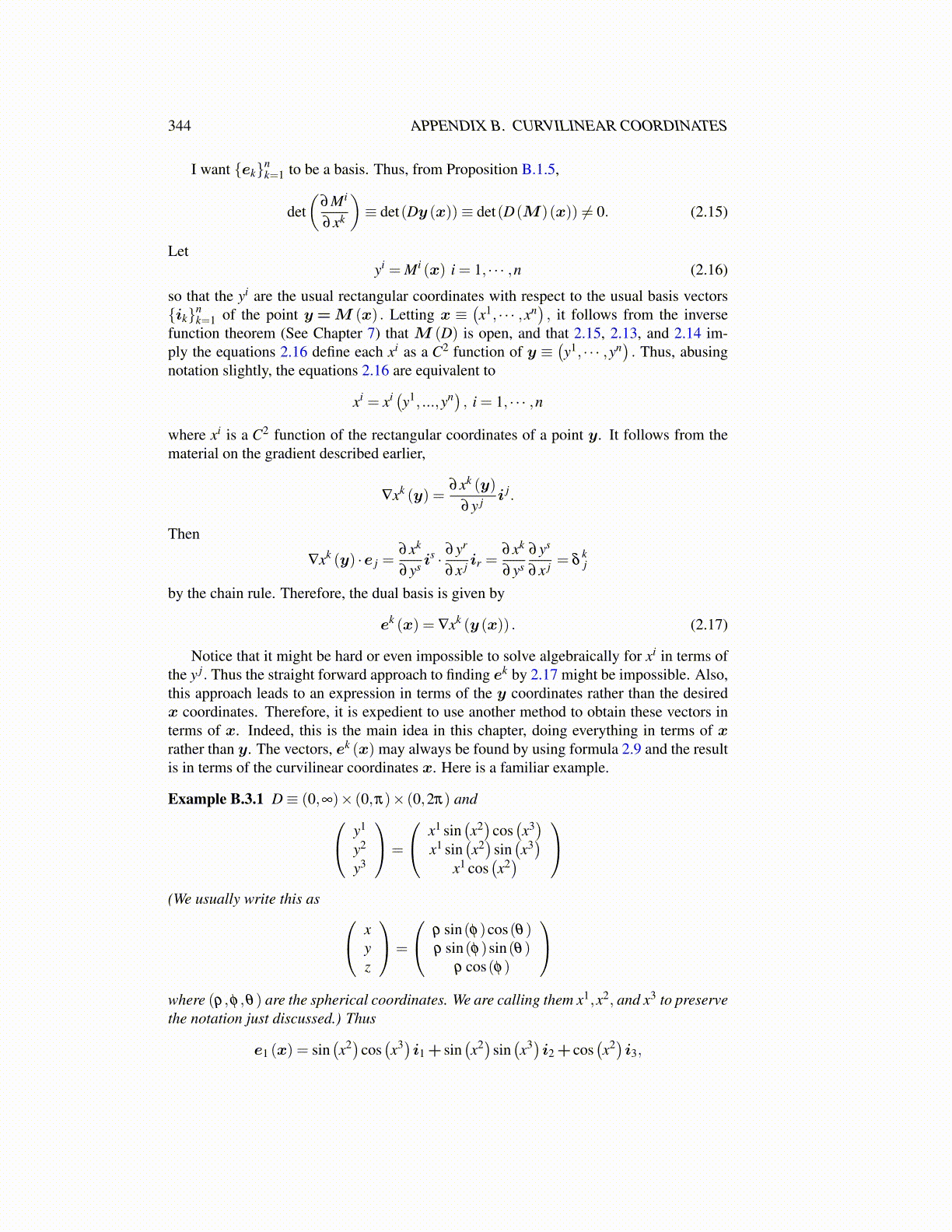
344 APPENDIX B. CURVILINEAR COORDINATES
I want {ek}nk=1 to be a basis. Thus, from Proposition B.1.5,
det(
∂Mi
∂xk
)≡ det(Dy (x))≡ det(D(M)(x)) ̸= 0. (2.15)
Letyi = Mi (x) i = 1, · · · ,n (2.16)
so that the yi are the usual rectangular coordinates with respect to the usual basis vectors{ik}n
k=1 of the point y =M (x) . Letting x ≡(x1, · · · ,xn
), it follows from the inverse
function theorem (See Chapter 7) that M (D) is open, and that 2.15, 2.13, and 2.14 im-ply the equations 2.16 define each xi as a C2 function of y ≡
(y1, · · · ,yn
). Thus, abusing
notation slightly, the equations 2.16 are equivalent to
xi = xi (y1, ...,yn) , i = 1, · · · ,n
where xi is a C2 function of the rectangular coordinates of a point y. It follows from thematerial on the gradient described earlier,
∇xk (y) =∂xk (y)
∂y j i j.
Then
∇xk (y) ·e j =∂xk
∂ys is · ∂yr
∂x j ir =∂xk
∂ys∂ys
∂x j = δkj
by the chain rule. Therefore, the dual basis is given by
ek (x) = ∇xk (y (x)) . (2.17)
Notice that it might be hard or even impossible to solve algebraically for xi in terms ofthe y j. Thus the straight forward approach to finding ek by 2.17 might be impossible. Also,this approach leads to an expression in terms of the y coordinates rather than the desiredx coordinates. Therefore, it is expedient to use another method to obtain these vectors interms of x. Indeed, this is the main idea in this chapter, doing everything in terms of xrather than y. The vectors, ek (x) may always be found by using formula 2.9 and the resultis in terms of the curvilinear coordinates x. Here is a familiar example.
Example B.3.1 D≡ (0,∞)× (0,π)× (0,2π) and y1
y2
y3
=
x1 sin(x2)
cos(x3)
x1 sin(x2)
sin(x3)
x1 cos(x2)
(We usually write this as x
yz
=
ρ sin(φ)cos(θ)ρ sin(φ)sin(θ)
ρ cos(φ)
where (ρ,φ ,θ) are the spherical coordinates. We are calling them x1,x2, and x3 to preservethe notation just discussed.) Thus
e1 (x) = sin(x2)cos
(x3)i1 + sin
(x2)sin
(x3)i2 + cos
(x2)i3,